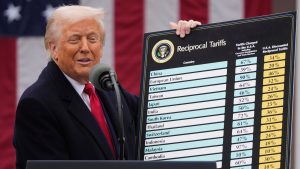Around 1 out of 6 American teachers works a second job: Report

Students and educators across the country are gearing up to go back to school after summer vacation. But many teachers didn’t get a break, even without class in session — an analysis by Pew Research Center shows a large number have a second job year-round.
About 16% of full-time public elementary and secondary school teachers worked a non-school job over the summer in the 2020-21 school year, which Pew Research Center said is the time period with the most recent data available. According to the National Center for Education Statistics, 17% also did so during the school year.
Pew noted this data did not include long-term substitutes, itinerant teachers, administrators or support staff, and also excluded teachers for private schools.
For comparison, in 2020 and 2021, the Bureau of Labor Statistics said 4.6% of all United States workers 20 years or older worked multiple jobs.
How much are teachers earning from second jobs?
Teachers earned an average of $3,550 in 2020-21 from non-school summer jobs, Pew wrote. On average, they earned about $6,090 from jobs they worked in the school year.
“Earnings from second jobs, whether during the summer or the school year, tended to make up a slightly larger share of teachers’ total income for those with less experience and those with less education,” Pew said, noting that non-school summer jobs made up 12% of the total income for teachers without a bachelor’s degree. For those without one, that was 6%.
According to the National Education Association, the national average starting salary for teachers is $46,526 as of April 2025. The overall national teaching salary on average is $72,030.
“Even with record-level increases in some states, average teacher pay has failed to keep up with inflation over the past decade,” the NEA said. “Adjusted for inflation, on average, teachers are making 5% less than they did 10 years ago.”
A Pew Research Center survey from 2023 found 51% of public school K-12 teachers were not too, or not at all, satisfied with what they got paid. Only 15% were extremely or very satisfied.
About 74% of Americans polled by Pew agreed that teachers should earn more, and two-thirds said being a public K-12 teacher is harder than most jobs.
What have lawmakers done?
Earlier this year, Senator Bernie Sanders, I-Vt., proposed legislation that would make it so teachers are paid at least $60,000 a year and give them $1,000 annually for classroom supply expenses.
“If we are going to have the best public school system in the world, we have got to radically change our attitude toward education and make sure that every teacher in America receives the compensation that they deserve for the enormously important and difficult work that they do,” Sanders said in a statement.
Some states are also trying to pass their own legislation for higher teacher pay as well. In June, Texas Gov. Greg Abbott signed a bill into law that provides $8.5 billion in new funding for public education and $4 billion for teacher and staff pay raises.
“Now is the time to make Texas No. 1 in educating our children,” Abbott said at the time. “House Bill 2 ensures that our schools are funded better than ever, teacher pay and student funding are at all-time highs, reading and math performance will improve and students will be better prepared for the workforce. The foundation is now in place for Texas education to start climbing the ranks.”





